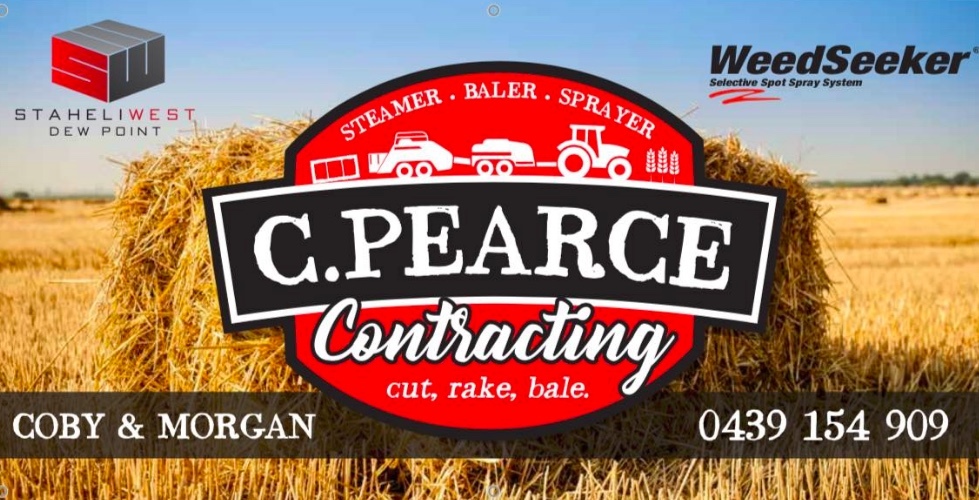How Dairy Farms will need to adapt to survive
- By: "Farm Tender" News
- Regenerative Ag & Carbon Farming News
- Nov 14, 2019
- 697 views
- Share

This article is bought to you buy C Pearce Contracting and Glendemar MPM.
Brace yourself. The next 1,000 words are going to make you very uncomfortable. They also might be the key to surviving—and thriving—in a marketplace poised for exponential change.
Five years may be all it takes to wildly disrupt the dairy marketplace, say the top dairy disrupters at the 2019 MILK Business Conference. (Spoiler alert: You're going to need to adapt to survive, and it won't be easy.) Here are the nine tips you need to know to come out on top:
1. Look outside of dairy for solutions. Tim Taylor, former CEO of VAS, didn't know the difference between a cow and heifer when he started his career in ag. Now he's been to more than 400 dairies in 10 countries. Currently, Taylor is exploring a startup platform to be an overarching connector or dairy technologies.
His advice to dairy farmers for future success? "Decide that you are a technology company that milks cows."
2. Embrace change. Dairy Farmers of America (DFA) launched its new 50% lactose-free milk and 50% plant-based beverage, they received feedback, good and bad. But the risks they took are paying off, says Doug Dresslaer, DFA director of innovation, not in small part because it's opening a new audience to the dairy market.
"We're selling more milk because of it. We're getting people back into the dairy aisle," he says. "At the end of the day we're selling more milk, and we found another use for the milk. And at the same time, we're addressing some of these consumer issues and insights, and we have found that people want this type of product."
3. Think small to think big. Aidan Connolly, CEO of Cainthus, who spent 28 years with Alltech, is most recently known for introducing technology that seeks to recognize cows' behaviors.
"I think a lot of us just get the impression that dairying is just going to be business as usual. But the reality is, we've seen every other business blown up and torn apart, disrupted," Connolly says.
He points to taxi businesses and the advent of Uber and movie houses in the age of Netflix to Alibaba, Amazon and beyond.
"And yet somehow or another, we imagine dairying is not going to change. And I think it's naïve. I think it's self-centered. I think we absolutely need to wake up and realize if we don't change the business, someone else is going to change it for us. And I'm not sure we're going to like the disruption they're going to bring," Connolly says.
4. Explore A.I. When it comes to artificial intelligence, there's a lot more we can do with cameras and sensors and some of the other technologies available.
"This has got the ability to watch your cows 24 hours a day. This allows you to watch how much time is spent eating, how much is spent drinking, how much time they spend standing, how much time is spent sitting down, ruminating," Connolly says.
There's a level of disruption going on in agriculture today that can change dairy, probably to a greater degree than what we've seen in the last 1,000 years, he says.
Ad - It's Hay season soon. For the best results contact C Pearce Contracting - Ad
"So the next four or five years could be extremely critical to the future of the dairy business," Connolly says.
5. Show consumers you're working with them. "Consumers aren't looking for perfection, they're looking for progress," says Taylor. "It's a little bit like Yelp for the ag ecosystem. Show actual progress."
For example, he says, if you look that the dairy industry, it's got a great story. Every year, dairy productivity goes up by about 1%. And over the long-term, he says, that's a transformative story, because it means the conditions are getting better and cows are getting treated better.
"But we're not telling that story downstream to consumers because we're a little bit afraid of transparency," he says.
6. Listen to Gen Z. "I'm far, far removed from Gen Z," says Dresslaer. "But if you read anything about what Gen Z wants purpose. It's about the story of where that product came from. And if there's that value and purpose behind it, they're much more willing to consider a product."
7. Recognize and eliminate the bad actors. The reality is that there have been some bad actors in the business, says Connolly, and that has led consumers to lose confidence in the food system. First, he says, we can't turn a blind eye ever to anyone mistreating an animal in the future.
"We're entering a new era with a level of transparency that makes it extremely difficult to not have that person reflect the integrity of our business," he says. "We're going to have to find a way to get rid of them and move them on and get them to do something else with their lives."
8. Gamify your business. You need to show your workers the progress you're making and make them part of that success, says Taylor.
"Make it fun," he says. "I think that's what technology allows us to do." At the end of the day, many people are competitive and motivated by score cards, so think of the ways you can create meaningful goals and motivate your team towards positive changes on your dairy.
9. Stop expecting consumers to be rational. "We're dealing with … consumers who never cared so much or understood so little about where food comes from," Connolly says. "So the level of ignorance is huge, and that makes it quite difficult to bring things to them. Innovation like this takes a certain level of bravery to do, to stand up there and say this is part of our future."
Ad - It's Hay season soon. For the best results contact C Pearce Contracting - Ad













Share Ag News Via